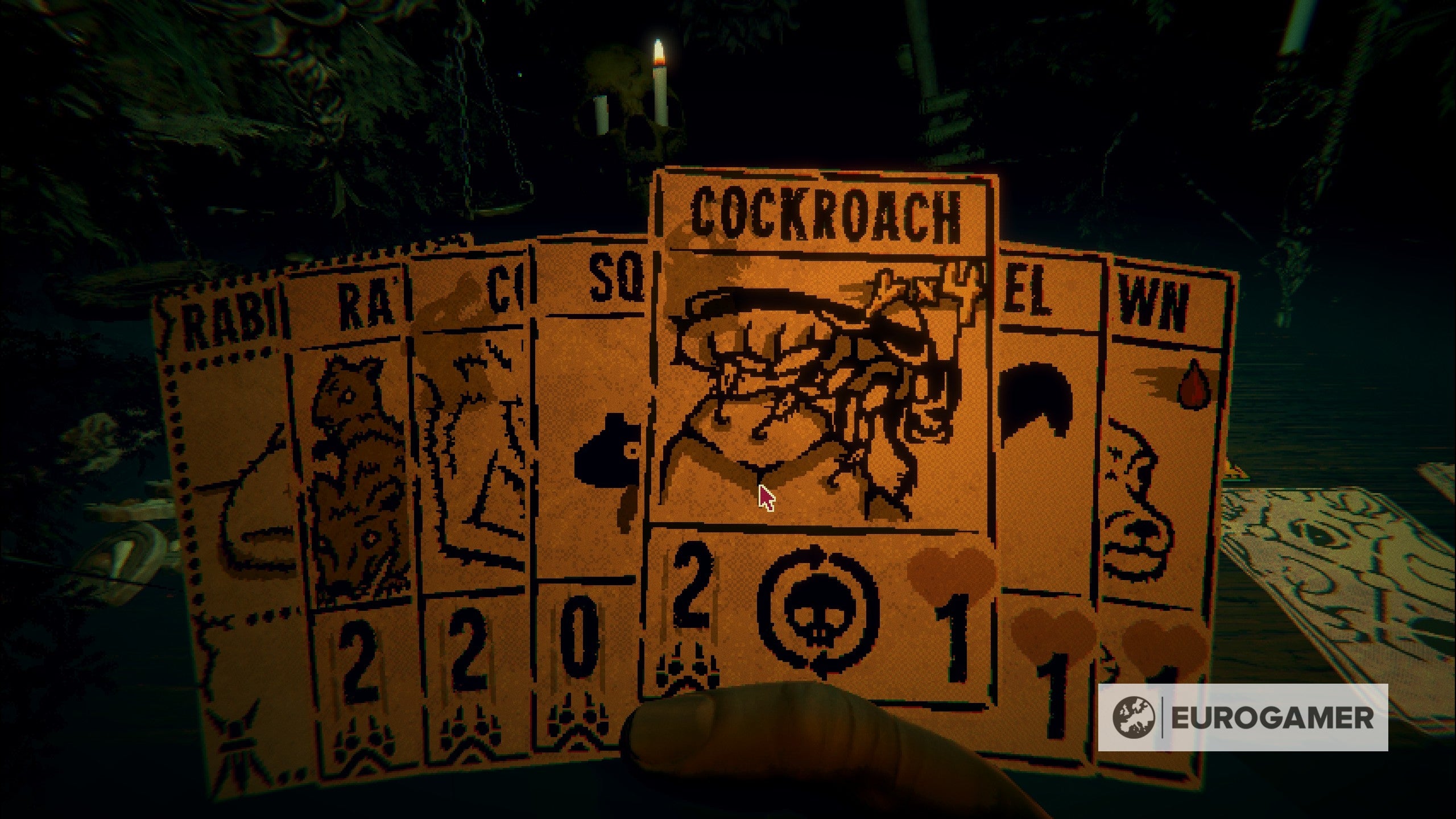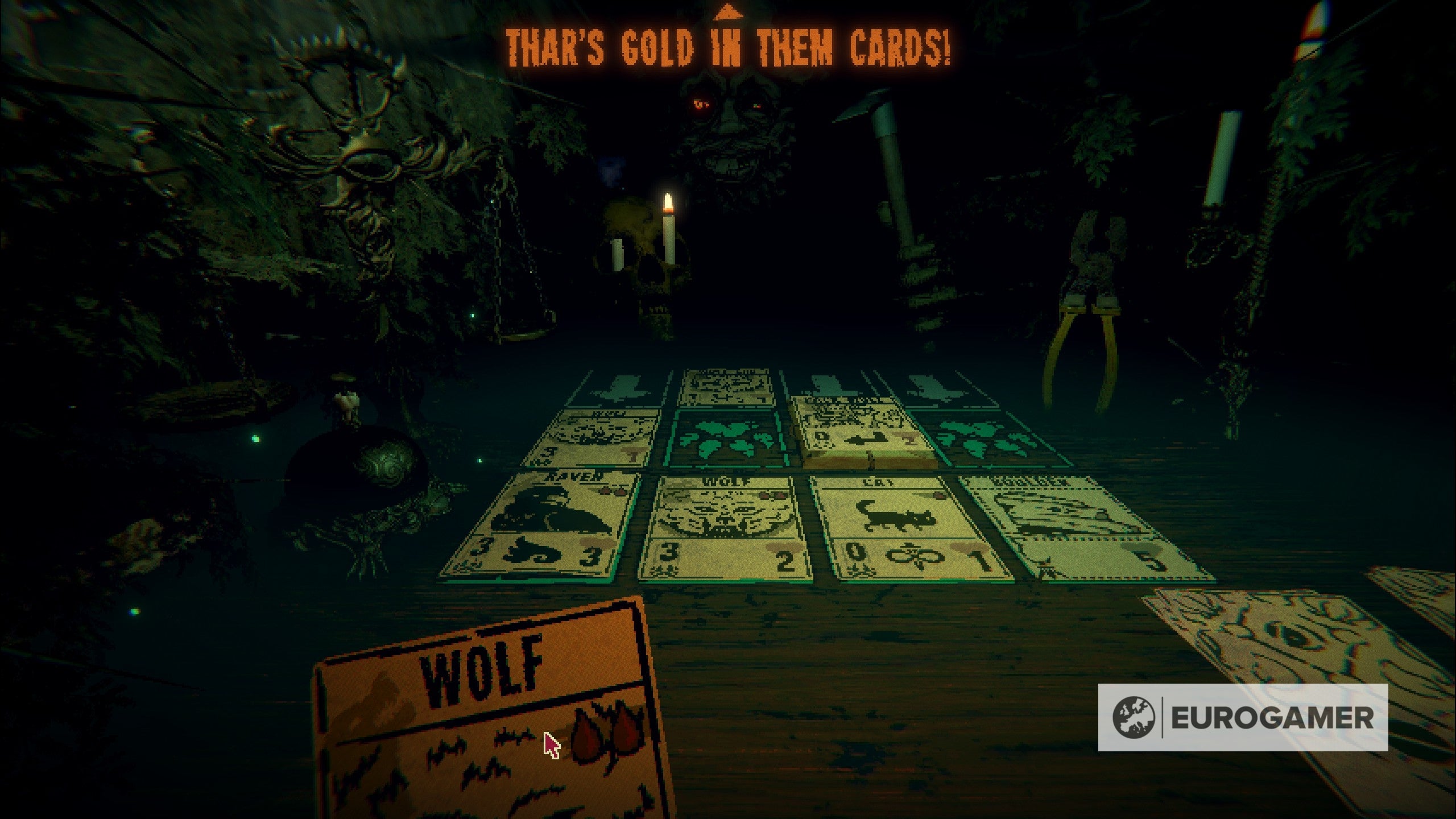I catch a glimpse of the thing every so often. I see a large, knobbly hand, green and weathered, and I hear its cheesegrater voice, scraping out words. Sometimes I see a face, or the outline of a face, but it’s gone as soon as I realise it, engulfed again by shadow or obscured by a mask. And if it is a mask, it becomes a caricature for me, playing the role of a yee-haw gold prospector for a special boss encounter. It is weird. Inscryption is weird. And that’s what I like about it. Without those things, it would just be a bit like Magic: The Gathering. I think that’s what the nuts and bolts of it are. Broadly, two players sit at a table and play creature-cards in their lanes. Those creatures either attack another creature opposite them, or damage the other player if the lane is empty. Do enough damage to the other player and you win. Like Magic, creatures have health and damage counts, and various abilities based around similar concepts. But unlike in Magic, you don’t use mana (gained from lands) to summon them. Instead, and in keeping with the gruesome theme of the game, you use blood and bones, earned from sacrifices. To play a wolf, for example, you need two drops of blood, which usually means playing and then sacrificing two squirrels in order to summon it. Poor things. Bones, on the other hand, come when cards are defeated. It means you have a potential two income streams for getting your creatures down. In between battles, you build your deck. You move a figure along a map, stopping it at card-draw stops, card-upgrade stops, battles, bosses and merchants (though I haven’t seen one of these yet). Sounds familiar, doesn’t it? On a base level it is. But as the nuances begin to show themselves, it pulls apart. You can, for instance, affect battles by having tools on the table. You can use a pair of scissors to cut an opposing card in half, for example, or you can use a fan to blow your cards and give them the flying ability for one turn (so they ignore creatures in their way). Or you can wrench a tooth out with some pliers. Why would you want to pull a tooth out? To use its weight to try and tip the scales in your favour. Teeth, you see, are the game’s damage tokens. Deal unblockable damage to your opponent and teeth are piled onto their side of the scale. Should the tray touch their side of the table, they lose. Then there are cards that talk to you, hinting at a deeper, darker story underneath. There’s a wonderful juxtaposition in Inscryption between the cutesy woodland creatures you play - the sparrows, cats and fawns - and the nightmarish atmosphere around you. These cards, so dignified and innocent, next to the pulling of teeth and sacrifice. And when a stoat begs you to let it sacrifice another creature in order to gain power, you know Inscryption is in a world of its own. But where is that world? Where is this wood cabin you find yourself in? Is it in the real world, or is this not a world at all, but an in between, a kind of purgatory? I don’t know. You do get a chance to explore it, to poke around in the gloom and find puzzles (offering cards and, potentially, a way out?), but the answers you seek are never freely given. Always, there’s the throb of a thick cello string, and the harsh clunk of machinery in your ears. And always, there’s it, that thing, sat there, watching, obscured, unknowable. Your overseer, your tormenter, your game’s master.


